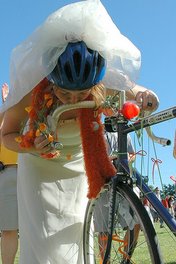Nicaragua: Managua, San Jose
10 julio Managua, San Jose
The morning passed without much fuss. I had felt a little malaise had set in because we had stayed in one place for more than one day. Strange feeling! Anna read the paper and found a story about the declassification of CIA documents pertaining to the Castro assassination attempt.
Throughout our time in Nicaragua, there has been the abiding subplot of Union Fenosa. According to many, it has been a simmering issue for quite some time, but recently the problems have exploded with sporadic and unpredictable blackouts that have caused rioting in the streets. When we first came, there was a TV story about a riot in a barrio in Managua, cutting off both light and water (pumped by electricity) for indefinite periods. Just in the past few days, damning front line stories about the damaging effects of blackouts on hospitals and barrios have pervaded daily papers. Much of the graffiti we’ve encountered has been in protest of Union Fenosa. Everyone whom we ask about Union Fenosa have had pointed views about the Spanish utility company.
Went past the panaderia we love so much. What a cool lady! I want to adopt her. Then came the search for an ATM for Anna and i. I’ve determined that Managua was conceived by a centaur as a labyrinth. When we returned to the hotel, H, B & R were in deep conversation with two fellows named Steve and Juan who are doing a documentary on insecticide use and its health effects in Chinandega. They explained that the tent city set up along the roundabout is populated by the families of people effected by insecticide use. Steve and Juan promised to email us the hydrological studies and maps of Chinandega so that we can forward it on to Amigos for Christ.
Jaime came by, and we all packed into the van driven by Luiz for the 2-hour drive to San Jose, where we stayed before. The weather was bad enough to put off the assembly until the next day, so we settled in for an introduction of the project and AsoFenix.
AsoFenix’ orientation
AsoFenix’s main role is to identify communities that have both need and capacity for renewable energy systems. The organization began when a group of engineering students at the University of Managua took a separate course on renewable energy, teaching how to assemble solar dryers, cookers, pumps, etc. The group of 5 students founded AsoFenix. Jaime met Michael Royce and started a dialog about how to get sustainable technologies to rural areas. Alexis and Ain work with battery recharging stations, solar pumps and biogas. In Somoto, some communities have up to 20 biodigestors because they are far from firewood supply. B & H had seen biodigestors in Costa Rica. In Candelaria, the biodigestors might use pig dung. Now, mostly women and children have to walk 1-2km to find firewood. In areas with biodigestors, men are more likely to cook because it’s easy to light and novel to use.
After dinner (served by Nonnie the proprietess), we went for a group walk. Jaime showed us the houses that had either been bought or seriously remodeled by people who had gone to America to work and had sent money back (or come back themselves to retire), which has inflated house prices in the area. San Jose, like many communities, has one Catholic church but numerous Evangelical churches, the difference between restrictions imposed by the Archdiocese and the promulgation of Evangelical churches by charismatic individuals.
H asked a number of edifying (for me!) questions about voltage and transmission. Nicaragua uses 120 volts for normal use and 240 for industrial uses. Malacatoya started as an 8kW system but got expanded to 13kW.
Other interesting tidbits:
While we were at the dinner table (documented by Jaime for his tourism files), the television had a story about Union Fenosa and blackouts.
Cellular phones are very expensive, costing US$15 for 40 minutes usually for monthly signal, this is why people often use a cyber for phone calls, including Jaime.
Most electrical lines now use aluminium rather than copper lines because copper lines are expensive and apt to be stolen. The downside is that aluminium lines have to be thicker.


No comments:
Post a Comment